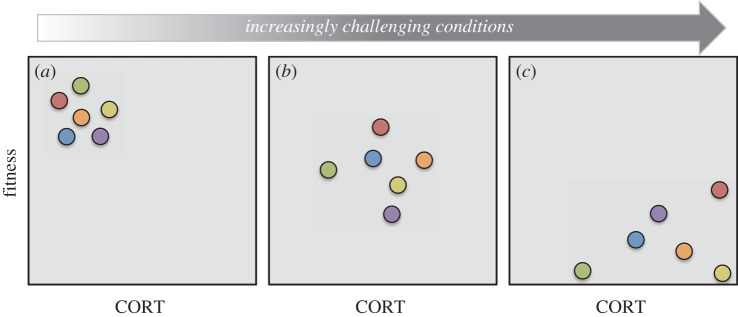Figure 5.
An illustration of the reaction norm approach to estimate how selection shapes plasticity in endocrine traits. In this hypothetical example, CORT concentrations and a fitness metric are measured in six individuals exposed to three different experimentally generated environmental conditions associated with an increasing level of challenge (a–c), while all other environmental conditions are held constant. Importantly, exposing the same individuals (or genotypes) to all three levels of environmental challenge allows the estimation of within-individual reaction norms for both the endocrine trait and fitness metric of interest. In this example, all individuals respond similarly to increasing levels of challenge, increasing CORT and decreasing fitness as conditions worsen, but the individual with the highest level of endocrine plasticity (in red) achieves the highest cumulative fitness across conditions. Based on these results, we would infer that natural selection favours a relatively high degree of CORT plasticity across these varying environmental conditions.

